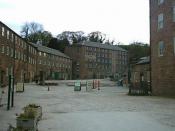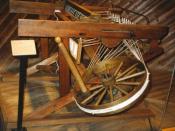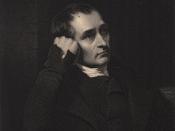The Industrial Revolution was a major turning point in world history. The term industrial revolution originally referred to the inventions and changes that transformed England, between 1750 and 1830, from a largely rural people making a living almost completely from agriculture to a urban or suburban society occupied more and more in factory manufacture. Other European nations went through the same course soon thereafter, followed by others during the 19th century, and still others (i.e., Russia and Japan) in the early 1900s. In some countries this revolution is only now taking place or still lies in the future. It has effected the whole world in one way or another. Generally, the Industrial Revolution began in Great Britain in the early to mid 1700's. It is argued that the revolution ended in the beginning of the 20th century, whereas some people believe that it is still continuing on certain parts of the globe today.
Before the industrial revolution families lived on farms that were mostly self-sufficient. They made their own clothing, grew their own food and educated their children. Cloth was made from cotton or wool, depending on the environment, and it was almost always hand woven. With the invention of the Spinning Jenny in 1764 by James Hargreaves the chore of making cloth became much easier. Instead of a regular spinning wheel, which could only make one piece of thread at a time, the spinning jenny had 8 spindles, making 8 threads while only turning one wheel. The "descendant" of the spinning jenny would have to be Richard Arkwright's water frame, invented in 1769. It used two rollers, making the thread more useful; the yarn could be used for anything. In 1733 John Kay invented the flying shuttle which decreased the amount of workers needed to operate a loom and...


